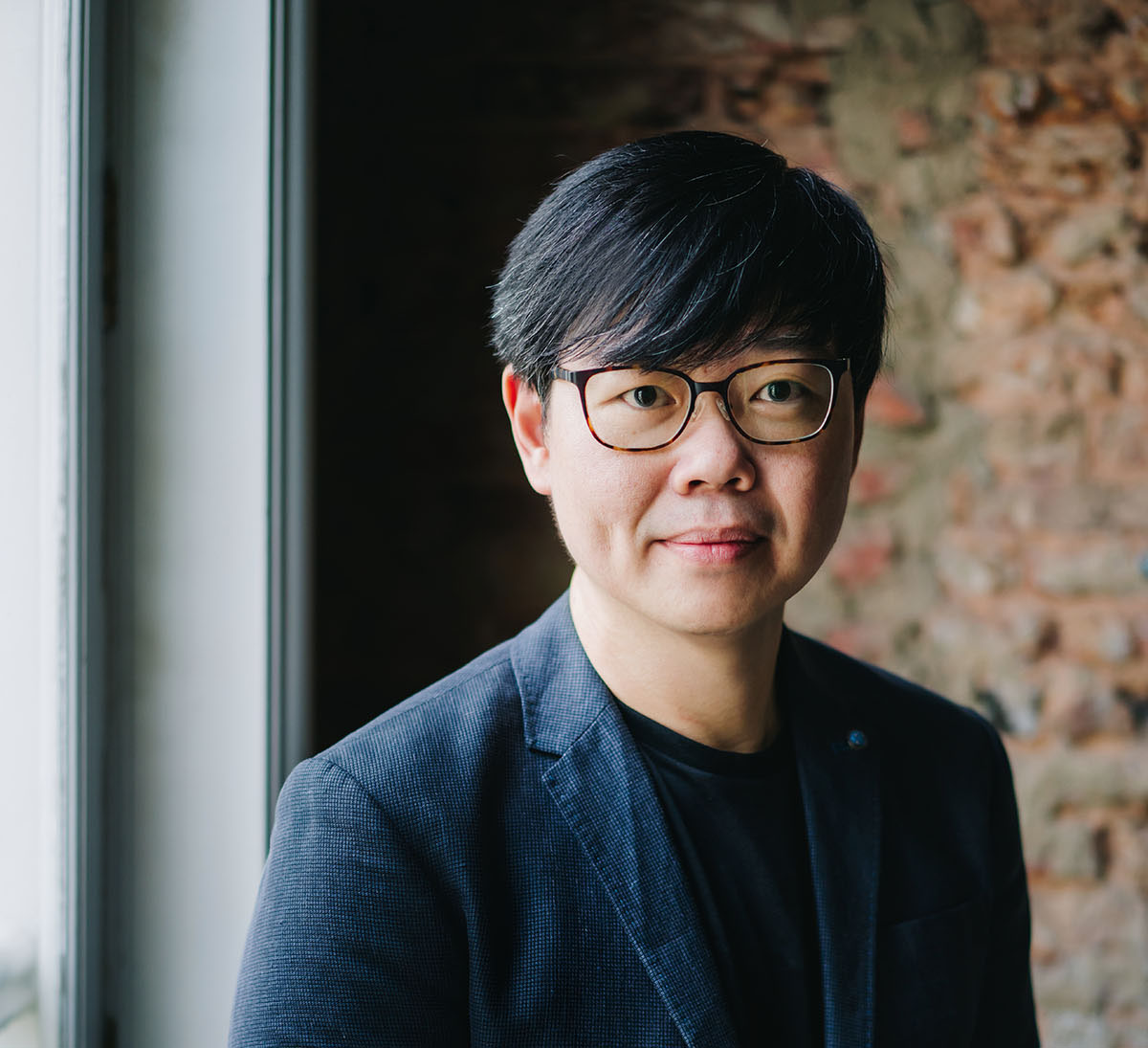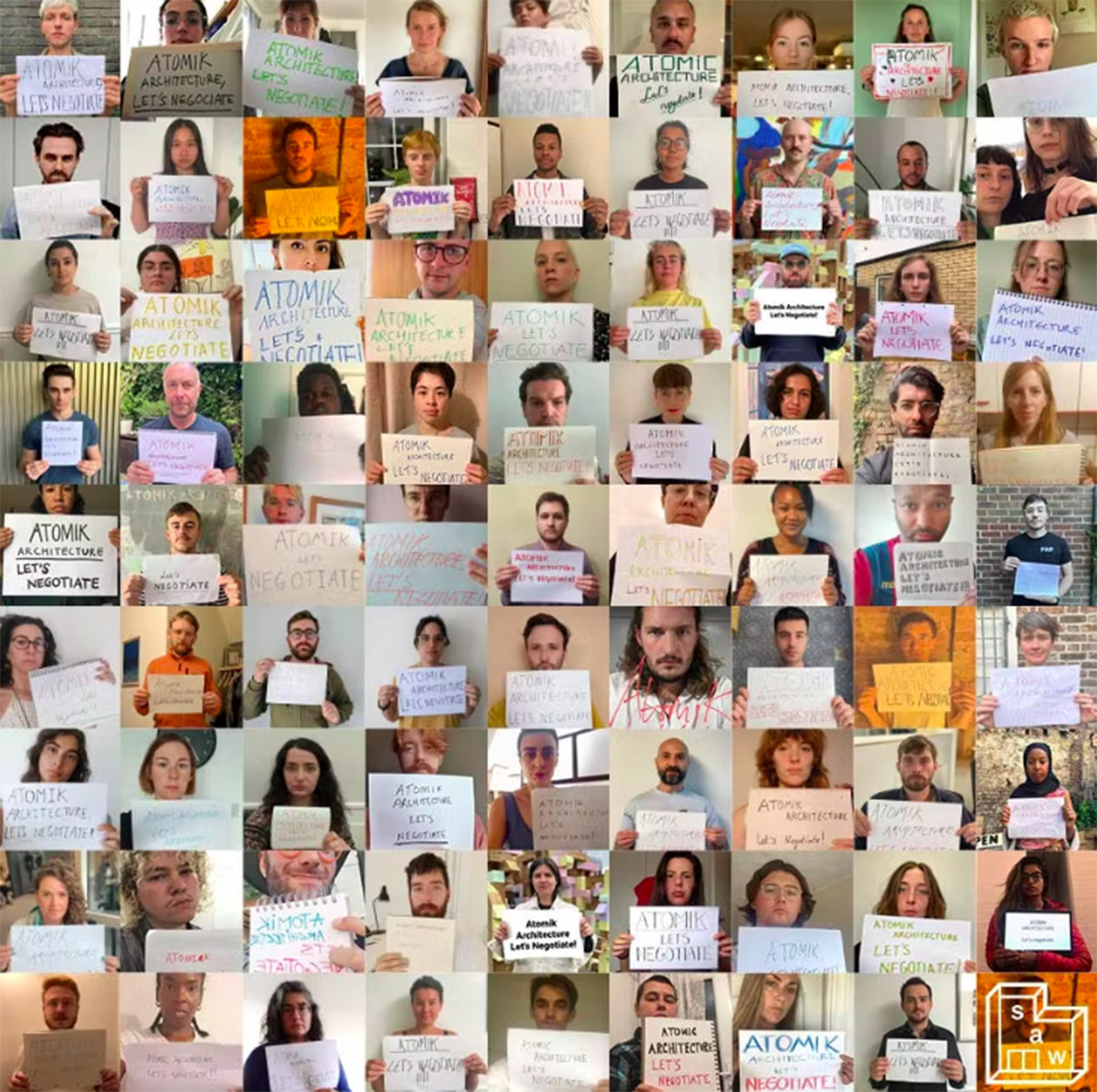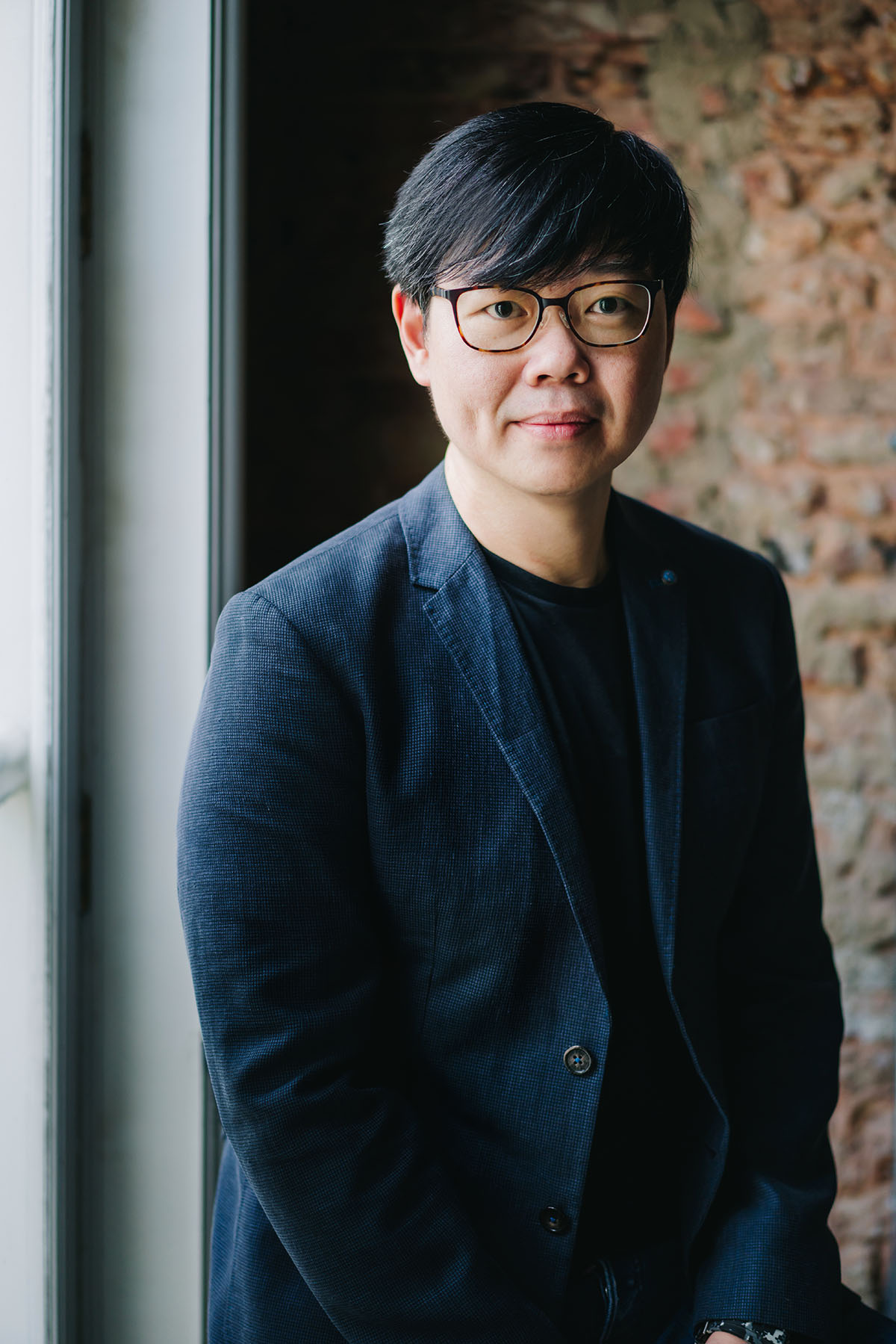Submitted by Berrin Chatzi Chousein
"Value Articulation Framework will allow us to fully understand the responsibilities of an architect"
Singapore Architecture News - Sep 27, 2022 - 09:51 6384 views

Melvin Tan, the President of the Singapore Institute of Architects (SIA), is launching a Value Articulation Framework (VAF) that sets out the costs of services, responsibilities and liabilities of an architect in the architecture profession.
Value Articulation Framework, or simply VAF, will address the raising issues that several architects face with currently in the profession, including low-wages, over-load working, a lack of work-life balance and a high level of stress under project deadlines.
In response to these concerns, SIA's new program will set out the exact cost of an architect under a project commission from conceptual design stage, salaries to software, liabilities, authority.
"This has been a bugbear of the profession for long enough"
"This has been a bugbear of the profession for long enough, throughout the world," SIA President Melvin Tan told World Architecture Community in an interview.
"SIA believes it is time for architects to fully understand the cost of our services, including manpower, fixed cost, subscriptions and cost of liabilities and responsibilities."
Tan emphasizes that "the program will help to be able to fully calculate the cost of our service in relation to increasing codes and regulations which require increased time commitments on our part, in order to benefit our clients."
According to Tan, "the program has a holistic framework that allows the architectural institutes to address and discuss with key agencies whoever new regulations are levied on the professionals."
The initiative of the Singapore Institute of Architects, chaired by Melvin Tan, came after many younger generation architects in Singapore announced that it would not be possible to stay long in the profession for similar reasons.
"7 percent of young architecture graduates are planning to stay in the profession in the long run"
According to an article in Channel News Asia (CNA) published on July 3rd, it reports that only 7 percent of young architecture graduates said they were likely to stay in the profession in the long run, according to a survey conducted last year by the Singapore Institute of Architects.
This shows that young Singaporean architects paint a rather pessimistic picture about their future.
The issue emerges because of the same concerns and demands in the profession: low wages, long-working hours and high stress. It also proves that these demands and concerns in the architectural profession are not just the common problem of architects in the United States or United Kingdom since the industry began to see lots of unionization efforts and strike actions.
For instance, in December 2021, a group of architects at New York firm SHoP ignited unionization efforts to form a union. Similarly, New York firm Bernheimer Architecture became the first and only architecture studio to unionize. Recently, London-based architecture practice Atomik Architecture workers announced that they are preparing to initiate a ballot for strike action, following a dispute over pay and working conditions at the firm.
"SIA is very much involved with ARCASIA and at our recent forum in Mongolia this September, SIA raised these issues facing our young generation of architects, citing the above reasons for the decline in long term stayers in the profession," Melvin Tan explained.
"The other member institutes echoed the sentiment and are considering SIA’s call for a collective effort to right this ship. In essence, the regulations and demands on young architects in Singapore do not differ greatly from other markets."
"I can say, however, that with our highly regulated practice environment in Singapore, the demands may be heightened for young practitioners, in our quest for the highest standards," Tan continued in an interview with World Architecture Community.
Value Articulation Framework to address the issues holistically
Melvin Tan summarizes the problems faced by young architects according to the research conducted by SIA with more than 500 young graduates as follows: "punishing workload and deadlines, unreasonable clients, increasing and sometimes conflicting requirements from authorities, lack of support and guidance from supervisors and unhelpful or under-resourced consultants."
"We know that the above are possible scenarios in many firms, at various degrees and mix proportions. That is why SIA is developing the Value Articulation Framework, as one way to address the issues holistically," Tan added.
The Singapore Institute of Architects is urging architecture firms to invest their staff by setting 1 per cent fee increase in every project. According to SIA, this can be applied to S$15-billion projects available every year, and this equals to a S$2,500 added value to an architecture worker in a month.
Value Articulation Framework to include 3 main titles
VAF is envisioned as a matrix that details 3 main baskets, namely, Services, Responsibilities & Liabilities and Business Costs, Tan explained.
First basket, titled Architects Services, will include feasibility, concept design, detailed design, tender documentation, contract administration and something that is not acknowledged enough, "Lead Consultant Coordinator".
Second basket, titled Responsibilities & Liabilities, will consist of code compliance, self-declaration and man-hours on-site for checking, design coordination amongst allied consultants (also part of Lead Consultant Coordinator role), sustainability and greenmark, design for safety, design for maintainability and waivers and time spent on work-arounds to fulfill client desires.
Third basket, named Business Costs, will cover rental, equipment, softwares (subscriptions of which are constantly on the rise), authority, mandated submission tools and verification mechanisms, HR and welfare provisions and professional indemnity insurances.
Tan said that "We definitely believe that VAF is a useful tool and couples well with the advocacy work of professional institutes, and can be and should be implemented across the multiple consultancy stakeholders in the built environment and not just architects."
Melvin Tan is positive about how the program will be successful and implemented in architectural offices in Singapore in real life. He believes that SIA will continue to work with relevant agencies and governing boards to ensure that the VAF is largely accepted in the industry.

Workers at Atomik Architecture are preparing to initiate a ballot for strike action, following a dispute over pay and working conditions at the firm. Image: UVW-SAW members show support for Atomik workers. Signs read: “Atomik Architecture, Let’s Negotiate!”. Image via UVW-SAW.
Besides the scope of Value Articulation Framework, Tan also talked about the digitization plans of SIA and the integration of metaverse with BIM environment, the use of AR/ VR in execution of projects in the interview.
Melvin Tan is the Deputy Managing Director and founding partner of LAUD Architects, a Singapore-based practice established in 2004.
Tan has served on design panels and juries, notably, as World Architecture Festival Judge in 2014 and recently on the jury for URA’s Paya Lebar Airbase Ideas Competition in 2020.
Tan also sits on the Investigation Panel of the Singapore Board of Architects (BOA).

Melvin Tan, President of Singapore Institute of Architects. Image © Wesley Loh, courtesy of Singapore Institute of Architects.
Read the WAC's full edited transcript of the interview with Melvin Tan below:
Berrin Chatzi Chousein: Over-load work flow in architectural offices, low-wages, work-life balances are almost becoming common problem of architectural offices all over the world. Can you tell us a bit about the current regulations and the demands of young architects in Singapore?
Melvin Tan: SIA is very much involved with ARCASIA and at our recent forum in Mongolia this September, SIA raised these issues facing our young generation of architects, citing the above reasons for the decline in long term stayers in the profession.
The other member institutes echoed the sentiment and are considering SIA’s call for a collective effort to right this ship. In essence, the regulations and demands on young architects in Singapore do not differ greatly from other markets. I can say, however, that with our highly regulated practice environment in Singapore, the demands may be heightened for young practitioners, in our quest for the highest standards.
Berrin Chatzi Chousein: What are the most common problems faced by young architects in architectural offices in Singapore? Have you done any research on this?
Melvin Tan: Yes, we did a research. In our survey of more than 500 young graduates, the problems faced include the following in decreasing weightage: punishing workload and deadlines, unreasonable clients, increasing and sometimes conflicting requirements from authorities, lack of support and guidance from supervisors and unhelpful or under-resourced consultants.
We know that the above are possible scenarios in many firms, at various degrees and mix proportions. That is why SIA is developing the Value Articulation Framework, as one way to address the issues holistically.
Berrin Chatzi Chousein: The Singapore Institute of Architects (SIA) has announced a “Value Articulation Framework” program. Could you please tell us about this program? How will it work?
Melvin Tan: SIA believes that government agencies and developers don’t need to hear more calls from architects for higher fees. This has been a bugbear of the profession for long enough, throughout the world.
SIA believes it is time for architects to fully understand the cost of our services, including manpower, fixed cost, subscriptions and cost of liabilities/responsibilities. It's also important to be able to fully calculate the cost of our service in relation to increasing codes and regulations which require increased time commitments on our part, in order to benefit our clients.
Thirdly, it's important to have a holistic framework that allows the architectural institutes to address and discuss with key agencies whoever new regulations are levied on the professionals.
Berrin Chatzi Chousein: What exactly does the Value Articulation Framework program offer? Will it involve only architecture offices?
Melvin Tan: Value Articulation Framework, or VAF, is envisioned as a matrix that details 3 main baskets, namely, services, responsibilities & liabilities and business costs.
First basket, titled Architects Services, will include feasibility, concept design, detailed design, tender documentation, contract administration and something that is not acknowledged enough, "Lead Consultant Coordinator".
Second basket, titled Responsibilities & Liabilities, will consist of code compliance, self-declaration and man-hours on-site for checking, design coordination amongst allied consultants (also part of Lead Consultant Coordinator role), sustainability and greenmark, design for safety, design for maintainability and waivers and time spent on work-arounds to fulfill client desires.
Third basket, named Business Costs, will cover rental, equipment, softwares (subscriptions of which are constantly on the rise), authority, mandated submission tools and verification mechanisms, HR and welfare provisions and professional indemnity insurances.
We definitely believe that VAF is a useful tool and couples well with the advocacy work of professional institutes, and can be and should be implemented across the multiple consultancy stakeholders in the built environment and not just architects.
"VAF is SIA’s way of bringing the known and unknowns in our architectural practice"
Berrin Chatzi Chousein: Do you consider that the Value Articulation Framework will be effective and will be implemented in every architecture office? Will it be possible to implement it as a mandatory program?
Melvin Tan: VAF is SIA’s way of bringing the known and unknowns in our architectural practice onto a level platform. Much work in advocating for the framework will have to be done to ensure the maximum effectiveness and adoption rate of the VAF. SIA will continue to work with the relevant agencies and governing boards to ensure that, if successful, VAF is adopted in majority by our practices.
Berrin Chatzi Chousein: At SIA you are also interested in new digital technologies and the evolving virtual world, such as metaverse. Do you have other projects supporting local architects with digital transformation at SIA?
Melvin Tan: Digital transformation has always been a backbone of SIA’s work. Singapore at large embraces digitization and our plan submission and approval process is currently undergoing a major revamp. This will see the future system based fully on BIM models submission to all agencies at the same time. Model checkers will be employed to assist in verification of compliances and agencies will coordinate written directions internally before they are issued collectively to the architects.
At SIA, we see the metaverse as not merely the design of a parallel digital space but rather looking at opportunities where an integrated BIM environment, with the use of AR/ VR in coordination and execution work can be adopted on a national level.
The metaverse is still at an early adoption phase with a handful of firms, large and small, who have dedicated some resources towards actively researching and exploring this space.
Berrin Chatzi Chousein: Does the SIA have projects that prepare local architects to the metaverse world?
Melvin Tan: The SIA is currently looking into developing some potential projects and also in the midst of organizing sharing sessions that will increase the interests of our members and hopefully grow the critical mass of firms that will embrace the metaverse.
End of the transcript.
Top image: Melvin Tan, President of Singapore Institute of Architects. Image © Wesley Loh, courtesy of Singapore Institute of Architects.
